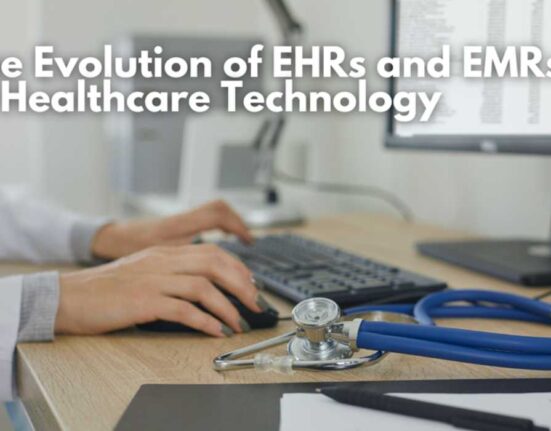Perhaps artificial intelligence’s most significant life-saving differences can be found within the healthcare diagnostics sphere. AI allows for the possibility to seek out patterns within such a large amount of data and assist with choices based on accuracy that cannot be rivaled for health diagnostics changes in disease diagnosis and treatment approaches. AI in health diagnostics is evolving with new hope for faster and more accurate diagnoses and personally tailored care introduced in 2024.
Since the traditional diagnostic process is time-consuming and human-interpreted, there is a likelihood of error-prone detection. Artificially intelligent systems are already aiding doctors and specialists to take faster, more informed decisions on analysis of medical images, predicting disease progresses, and many other actions. Innovations like these go a long way in improving patient outcomes while reducing the cost of care and avoiding the pressure thrust upon medical professionals.
The paper will focus on the top trends in 2024, led by how AI transforms healthcare diagnostics. We touch on the various places where AI is applied within medical imaging, predictive analytics, early disease detection, and remote diagnostics, among others. Along with these will be an outline of ethical considerations, challenges, and future outlook for AI in healthcare.
Top Trends in AI-Driven Healthcare Diagnostics in 2024
- AI-Driven Medical Imaging and Diagnostics
AI applications in healthcare is one of the strongest among all areas; it can be regarded as a powerful application area in medical imaging. AI algorithms can analyze complex images, including X-rays, CT scans, MRIs, to make for early and accurate diagnoses – particularly in such areas as cancer detection, diseases associated with cardiovascular conditions, or neurological diseases. With deep learning and computer vision, AI systems allow for the detection of subtle features in images that are not possible to be visualized by a human eye, thereby making diagnostic decisions more accurate and hastening the treatment process.
Advancements of AI Medical Imaging:
- It can now detect minute changes such as tumors, fracture, or internal bleeding through AI powered radiology tools.
- It saves the time taken for routine interpretation of images by radiologists and lets them focus on the more complex cases.
- AI in pathology: The AI systems of today are scanning tissue samples to get pathologists to speed up fast and accurate diagnosis of diseases like cancer.
Hot Tools and Technologies:
- Zebra Medical Vision: The firm develops and trains AI-enabled radiology review. It has created tools that find diseases such as osteoporosis, fatty liver, and lung conditions. Price range- $1-$2 per scan depending on volume and licensing deals.
- Aidoc is an AI-based solution that enables real-time abnormal detection among radiologists through its general usage within hospitals and diagnostic centers.
Effect:
- Diagnostic errors are significantly reduced.
- Mass image processings are done on a rapid scale.
- Early diagnosis improvements, especially in cases of cancer and cardiovascular disease.
Case: According to a study by Nature Medicine in 2023, AI-based image analysis could be superior to a human radiologist who scans the body for breast cancer with an accuracy of 94.5% against 88% from a human analysis. With this improvement in diagnostic performance, false positives decreased thus reducing the number of unnecessary follow-up procedures.
- Predictive Analytics in Medicine
Predictive analytics is becoming increasingly utilized in preventive medicine. To predict when certain diseases will start progressing, AI analyzes vast patient datasets-from medical records and genomic data-and alerts physicians to take early preventive action before symptoms occur. These are such chronic diseases as diabetes, heart disease, and Alzheimer’s.
Top Trends in Predictive Analytics:
- Risk stratification models: AI can identify the patients at high risk of developing conditions such as stroke and heart disease and thus can be given an early intervention.
- AI-based decision support systems are guiding treatment plans based on predictive models which consider patient data, treatment histories, and outcomes from similar cases.
- Personalized medicine: AI guides the tailoring of preventive strategies to individual patients based on genetic, environmental, and lifestyle data.
Popular Tools and Technologies:
- Tempus: Helps in the delivery of cancer care through AI-based predictive models that inform treatment decisions. Pricing is on a plan basis depending on the needs of the health provider.
- IBM Watson Health: Leverages AI to predict progression of disease and for most chronic diseases, puts together customized treatment prescriptions. Pricing varies but large health organizations tend to pay between $10,000 and $100,000 annually.
Impact:
- Early identification of high-risk patients.
- Reduced hospital readmissions based on data-driven proactive care.
- Customized care plans that boost patient outcomes.
Case Example: The Cleveland Clinic was one location where a predictive AI model was deployed in 2022. It was designed to predict the probability of occurrence of sepsis in hospitalized patients. From the analysis of real-time patient information, the model identified which patients held the highest probability for risk, leading to an 18% reduction in mortality due to sepsis over a one-year period.
- AI to Detect Early Diseases
Early detection is important for most dangerous diseases, such as cancer, heart disease, and diabetes. AI is well adept at discovering patterns in genetic data, blood tests, and medical histories that indicate very early stages of diseases, often when patients are asymptomatic. It may hence be possible to intervene earlier in an episode with better improvements of the patient’s prognosis, cost savings, or both.
Critical Advances in Early Disease Detection:
- AI algorithms can detect early symptoms of diseases such as breast cancer, lung cancer, or Alzheimer’s.
- Screening tools that utilize AI provide more accurate results at times than the conventional approaches. For example, AI is more accurate in analyzing mammograms, colonoscopies, and lung CT scans.
- Biomarker prediction: Biomarkers identify diseases at early stages, even before the patients become symptomatic. AI is used to evaluate biomarkers.
Popular Tools and Technologies:
- Freenome: The company utilizes machine learning to detect cancer at its early stage using only a blood test. The cost is premised on the nature of the test conducted, costs ranging from around $250 to $800 per test.
- Google DeepMind: This has been characterized by AI systems that have dramatically improved the earlier diagnosis of cancer. Its AI models are able now to detect breast cancer from mammograms more accurately than any human expert radiologist.
Effect:
- There will be improved early detection cases of deadly diseases, and thus better survival rates.
- Early-stage diagnoses are reduced, thereby reducing healthcare costs.
- False positive diagnosis from cancer screenings is reduced, which leads to fewer anxious patients and unnecessary procedures.
Example Case: One trial that had recently been conducted with DeepMind’s AI mammography system, impressive results came out. In 2023, a report came out showing the reduction of false positives about 9.4% as achieved through the AI systems of DeepMind in its mammography, meanwhile true positives are to be detected using an increase of 8.1% compared to the standard assessments made by radiologists. This is highly a big step towards the early detection of breast cancer signs.
- AI-Powered Personalized Medicine
So far, AI has played a crucial role in personalizing treatment plans according to specific needs. With genomic data, biometric data, and lifestyle conditions, AI can prescribe a particular treatment pathway, medication, or intervention for the patient such that the approach could be both effective and safe.
Important Personalized Medicine Trends:
- AI uses genetic profiles to prescribe customized cancer therapies.
- AI makes it possible to customize the levels of drugs in individual patients based on their genetic factors and rate of metabolism.
- Predictive models run on AI facilitate predictions for people about the efficacy of drugs and potential side effects of drugs, so no one has to go through a trial-and-error situation, especially with chemotherapy treatments.
Tools and Technologies in Vogue:
- Foundation Medicine: Foundation Medicine can offer AI-based cancer diagnosis, which offers personalized treatment recommendations based on genomic alterations. For such a genomic profiling test report, it costs about $5,800.
- Berg Health Develops Biomarkers with AI Toward the Development of Personalized Treatments against Cancer and other Diseases.
Impact:
- Fewer side effects from the treatments.
- Healthcare is less costly due to the better-targeted therapies.
- Patients are going to be satisfied with the treatment prescription.
Example Case: AI-based models for customized care in cancer treatment are used at Memorial Sloan Kettering Cancer Center. The doctors identify the mutations specific to the patient’s tumor and thus get the right choice of treatments that are likely to work, increasing the success rate by 15%.
- NLP for Medical Records and Clinical Notes
NLP is revolutionizing the way health care providers handle the unstructured data dealt in clinical notes, medical records, and research papers. Making use of NLP, AI models extract all the information from these documents, thereby enabling health care professionals to make informed decisions. It is very valuable in EHR management, where several hours are squandered scanning through extensive, complex medical histories for key points.
Significant Contributions to NLP in Healthcare:
- NLP algorithms enabling the extraction of actionable insights from clinical notes and lab reports, making data more accessible.
- Speech-to-text applications are helpful in noting the clinical encounter: it makes data recording by doctors accurate, and they may monitor during patient visits.
- NLP models have further added onto EHR management since the classification and summarization of EHRs are entirely automatic.
Popular Tools and Technologies:
- Nuance Dragon Medical One: It is a top voice recognition tool, that enables physicians to create medical documentation with voice. Pricing starts at $99 per user per month.
- Amazon Comprehend Medical: The NLP extracts information from medical records through the help of AWS pricing models based on usage.
Impact:
- Saves massive amounts of time for the physicians spent doing manual recording.
- Increased efficiency of hospital workflows and better patient data management.
- Informed decisions made faster through a reduction in the administrative burden.
Example Case: At John Hopkins Hospital, Nuance’s Dragon Medical One system reduced the time spent on manual entry into the EHR system by 40%, meaning doctors could now spend 30% more time directly with the patient than performing administrative duties.
Conclusion: Future AI in Healthcare Diagnostics
With the advent of 2024, AI in healthcare diagnostics no longer remains a faroff concept but is actually taking huge strides to detect and ultimately treat diseases. Medical imaging with AI, predictive analytics, personalized medicine, and much more: Integration of AI into healthcare transforms the life cycle of patient care-through faster, more accurate diagnoses, for instance-and helps doctors make better decisions.
While still having ethical and regulatory concerns against it, the potential of AI in the diagnostics of healthcare systems should not be missed. The technology’s continuously advancing strides promise to catapult our early disease detection, treatment personalization, health efficiency, and usher us into an era where AI saves lives.
The future of health care is AI-based, and 2024 certainly holds promise as an important year in this continued revolution. If you found this read insightful, we’d highlighly recommend you to check out this article on Best AI Sales tools, and supercharge your knowledge on everything AI.











